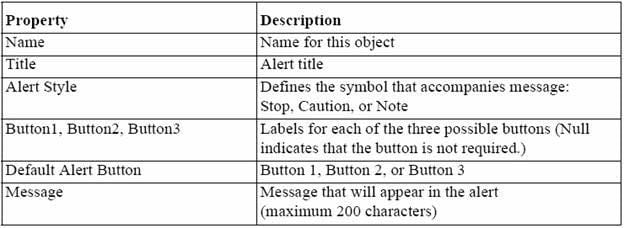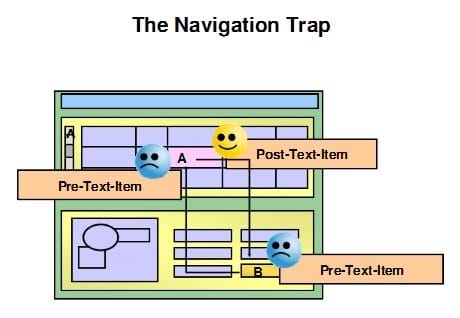1Z0-151 Online Practice Questions and Answers
You are implementing a JavaBean in a form, the bean has no visible component on the form when invoked, the bean displays an input text where users enter a zip code, the bean has a single method that returns a short weather forecast for that zip code as a character value.
How can you retrieve that value so that you can display it to the user?
A. Use FBEAN.ENABLE_EVENT to register a listener for the bean event. Obtain the value of SYSTEM.CUSTOM_ITEM_EVENT in a When-Custom item Event trigger, and then use that value as an argument to the MESSAGE built in.
B. Use FBEAN.REGISTER_BEAN as an argument to the MESSAGE built in to invoke the bean's method and return the value as a message displayed to the user.
C. Use FBEAN.REGISTER_BEAN to register the bean, so that when the user enters a zip code into the bean s input text, the value is automatically displayed in the bean area item.
D. Use FBEAN.ENABLE_EVENT to register a listener for the bean event. Obtain the value of SYSTEM.CUSTOM_EVENT_PARAMETER in a When_Custom-item-Event trigger, and then use that value as an argument to the MESSAGE built-in.
In Forms Builder, the iconic buttons on the form are blank, but when you click Run Form the form appears in the browser with Images in the iconic buttons.
What are two things that you can check to track the source of this problem?
A. forms Builder runtime preferences
B. the UI_ICON setting in the operating system
C. the iconpath setting in the Forms registry file
D. the UI_ICOM_EXTENSION setting in the operating system
E. the iconextension setting in the Forms registry file
F. the FORMS_PATH setting in the Forms environment file
G. the classpath setting in the operating system
You are planning the alerts that are needed for your Human Resources application. You wish to display the following in alerts:
*
A message to inform the user about being at the just record
*
A warning about a potential conflict with the data just entered
*
A message to display a validation error to the user
*
A warning that the salary is out of range and that asks whether the user wants to correct it
You want the note symbol ( ) to appear on alerts that display only informative messages, the

warning symbol to appear on messages where you will allow the user to continue despite some data problem, and the alarm boll symbol to appear where the user will not be allowed to continue without correcting the situation that caused the alert to be displayed.
You want to define the minimum number of alerts possible and customize them at run time.
Which alerts should you define?
A. One Note style alert and caution style alert
B. One Note style alert and one Stop style alert
C. On Caution style alert and one stop style alert
D. On Note style alert, one Caution style alert, and one Stop style alert
E. Two Caution style alerts and one Stop style alert
Which statement is always true about using OPEN_FORM to open multiple forms in an application?
A. Database transactions are always continued across forms.
B. Code is always shared among forms.
C. A calling form must pass data to a called form.
D. A global record group is always created.
E. Only A and B are true.
F. Only B and C are true.
G. Only C and D are true.
H. None of the statements above are true.
A clerk is using the Human Resources form, which displays a department and its associated employees on the same canvas. Only two Items in the form are enabled.
Possible navigation units that can occur during navigation of this form are:
1.
Outside the form
2.
The Human Resources form
3.
The Departments block
4.
The Employees block
5.
The current Departments record
6.
The current Employees record
7.
The Department_Id item
8.
The Employee_Id item
With the cursor in : Departments.Department_Id, the clerk clicks the :Employees.Employee_Id item. What is the sequence of navigational unit movement that occurs?
A. 1, 2, 3, 4, 5, 6, 7, and 8
B. 7, 5, 3, 2, 4, 6, and 8
C. 7, 5, 3, 2, 4, 6, and 8 only
D. 7, 5, 3, 4, 6, and 8 only
E. 7 and 8 only
The Employees database table contains more columns than can be displayed at one time in a form. You create a data block that uses all the columns. How can you enable users to interact with all the items and switch between them without scrolling or closing anything?
A. Define multiple content canvases and display them in multiple modeless windows.
B. Define multiple content canvases and display them in the same modeless window.
C. Define multiple content canvases and display them in multiple modal windows.
D. Define multiple content canvases; display one in a modeless window and the others in modal windows.
E. This is not possible because items from a single block must be displayed on the same canvas and window.
The Orders application enables the Orders form to be opened from the Customers form. Users are confused because when they save a new or changed order, they sometimes receive an error message that indicates that no changes have been made.
What could be the possible cause of this problem?
A. The Orders form is Opened in the same session as the Customers form.
B. The Orders form is opened in a different session from the Customers form.
C. The Orders form is opened in ACTIVATE mode.
D. The Orders form is opened in NO_ACTIVATE mode.
E. The trigger that opens the Orders form calls COMMIT_FORM after open form.
In the Orders form, users often have a need to return to the first record. Because there are many employee records, it may take a long time for them to scroll up to the first record, so you create a button with the label First Record.
When users click the first Record button, you want to display your own custom message instead of the
system message "FRM-40100: At first record."
The system message should be displayed in other cases when users attempt to scroll above the first
record.
You code the following When-Button-Pressed trigger:
:SYSTEM.mesage_level := '5'
UP;
WHILE FORM_SUCCESS LOOP
UP;
END LOOP;
MESSAGE ('This is the first Order');
The button works perfectly to return to the first record and display your custom message instead of the
system message. However, users report that as they continue to use the form after clicking the button, no
longer see other helpful messages. For example, the message "FRM 40102:
Record must be entered or deleted first" no longer appears when they attempt to scroll past the last record.
How can you resolve this Issue so that all system messages continue to be displayed after the trigger code
runs?
A. instead of setting the system message level to 5 in the code, set it to 50.
B. instead of setting the system message level to 5 in the code, set it to 25.
C. Add the line of code just before the end of the loop to reset the system message level.
D. Add a line of code just after the end of the loop to reset the system message level.
E. Instead of setting the system message level in the When-Button-Pressed trigger, use an On- Error trigger to customize the message.
F. Set the system message level in a When-New-Form-Instance trigger, so that all system messages appear except when in the scope of the trigger.
There are certain errors that are specific to the Salary item on the Employees form. You want to trap these errors only when the user navigates from the Salary item.
You have a form-level On-Error trigger that traps errors that apply to the form in general, but yon additionally code an item-level On-Error trigger for the Salary item.
When testing the form, you find that the general errors are not trapped when you navigate from the Salary item. What can you do to correct this problem?
A. Call the form level On-Error trigger from the item-level On-Error trigger.
B. Call the item-level On-Error trigger from the form-level On-Error trigger.
C. Change the Execution Hierarchy property for the item-level On-Error trigger.
D. Change the Execution Hierarchy property for the form-level On-Error trigger.
E. Move all the code to a PL/SQL program unit and call it from both the form level and item level On-Error triggers.
View the Exhibit.
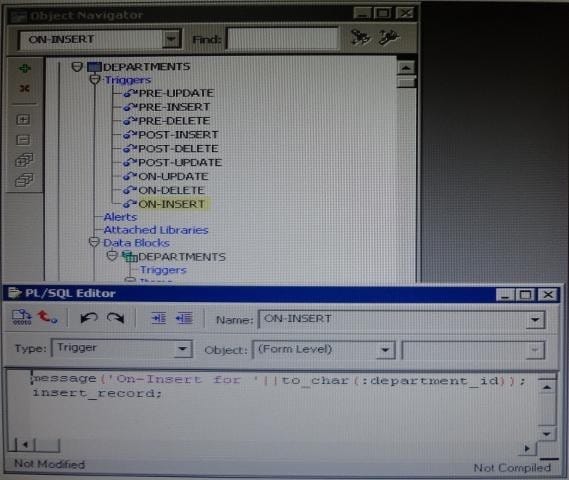
The Departments form has form level triggers defined as shown in the Exhibit. You have enabled array DML for the Departments block by setting its DML array size to 5 and setting the Primary Key property of Department id to Yes. You set runtime preferences for Forms Builder to use array processing.
You want to test that array processing is actually occurring, so, as shown in the Exhibit, the On- Update, On-Delete, and on insert triggers have code that:
1.
Displays a message to indicate which trigger is firing for which record?
2.
Does the thing (either updates, deletes, or inserts)
The other triggers simply display a message, indicating the trigger that is firing.
You run the form from Forms Builder, but from the messages, you can tell that array processing is not occurring. What should you change so that array DML gets implemented?
A. Delete the "On-" triggers; these triggers remove default processing, including array processing.
B. Set the DML array size to a value of 10 or greater; for array sizes loss than 10, array processing Is inefficient, and so is not performed.
C. Use the SYNCHRONIZE built-in after the MESSAGE built-in; otherwise, the message are not displayed until the processing is finished, giving the appearance that array processing is not taking place.
D. Set the Enforce Primary Key property of the Department block to Yes; it is not enough to just set the Department_Id to be the primary key.
You have been assigned to maintain the Orders form. Users complain that if the cursor is in the in the Orders block, they cannot navigate to the Order Items block by clicking a text item in that block. They must click the Next Block button to navigate from the Orders block to the Order Items block.
How should you investigate the source of the problem?
A. Check the Pre-Text-Item and Post-Text-Item triggers, because users may be encountering a navigation trap.
B. Check the Navigation properties of the Orders block that have non-default values.
C. Check the Navigation properties of the Order Items block that have non-default values.
D. Check the Navigation properties of the items in the Orders block that have non-default values.
E. Check the Navigation properties of the form that have non-default values.
F. Check that the items in the Order Items block are enabled.
You are using a PL/SQL program unit in the Orders form to display an image for the selected product in
the Order Items block. The code is called from several different triggers in the form.
The code (with line numbers added) is:
1.
PROCEDURE get_image IS
2.
Product_image_id ITEM := FIND_ITEM ('control.product_image');
3.
Filename VARCHAR2(250);
4.
BEGIN
5.
Filename := TO_CHAR(:order_items.product_id) | | '.jpg';
6.
READ_IMAGE_FILE (filename, 'jpeg', product_image_id);
7.
END;
Management wants all codes to be in PL/SQL libraries to facilitate reuse. You create a PL/SQL library and
drag the program unit from the orders form to the Program Units node of the library.
You then delete the program unit from the Orders form.
What three things must you do to compile the PL/SQL library and to use the code in the Orders form?
A. Change line 5 to: filename := to_char(name_in 'order_items.product_id' )) | | '.jpg';.
B. insert the RELEASE keyword between lines 1 and 2.
C. Delete the BEGIN and END statements (lines 4 and 7).
D. Change product_id to an in parameter and filename to an OUT parameter.
E. Save the library.
F. Generate the a .plx file.
G. Attach the library to the orders form.
H. Change the way the program unit is called in the Orders form.
Which symbol when used in an object's Property Palette, indicates an inherited property that has been changed?
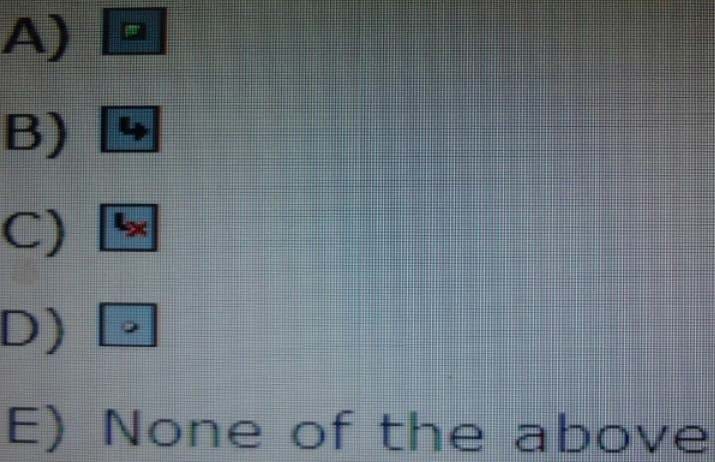
A. Option A
B. Option B
C. Option C
D. Option D
View the Exhibit.
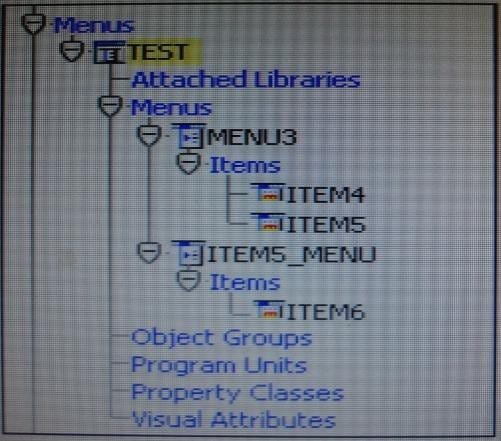
You are creating a menu for use with several forms. You create the structure of the menu in the Menu Editor.
As shown in the Object Navigator in the Exhibit, which objects are menu items?
A. MENU3 only
B. ITEM6 only
C. MENU3, ITEM4, ITEM5, ITEM5_MENU, and ITEMG
D. ITEM4, ITEM5, and ITEM6 only
E. ITEM4 and ITEM5 only
F. ITEM 4 and ITEM6 only
G. ITEM5 and ITEM only
H. MENU3 and ITEM5_MENU only
Which three statements are true about the PL/SQL Packages panel in the Forms debugger?
A. You can select an option button to view server packages.
B. You can view packages only while the runtime process executes PL/SQL.
C. You can view the values of variables that are defined in the package specification.
D. You ran select an option button to view the packages that have not yet been instantiated.

